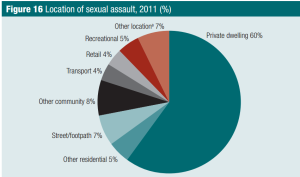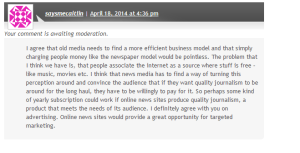“Fariz Allili looked out at the decaying tower blocks he calls the “ghetto”. Grafitti cakes his entrance hall, there is no heating, the lift has been broken for months and unemployed youths loiter with nothing to do. Even the local mayor calls this place a “vertical shanty town” (Chrisafis, A 2010). Welcome to Paris. Where croissants, the Eiffel tower and fine art, a world away from what the travel brochures say. Where hundreds of thousands of young North African immigrants struggle to find work in a country which is culturally, economically and politically divided.
As Salazar (2011) explains in his research into North African and other Diaspora in Western Sydney, “community media is better positioned to recognize changing attitudes towards migrants and refugees, and that these changes must also take place from the bottom up” (p1-2). This begs the question; is community media capable of bridging the so-called cultural divide between North African communities and the rest of France?
‘Beur FM’ formerly known as ‘Radio Beur’ was launched in 1992 (Echchaibi, N 2005, p14) which is a community radio station whose audience is largely made up of North African migrants. In a theoretical sense, there is certainly a legitimate case to argue that the radio network has the ability to reduce cultural divides. In general terms, the station is a voice for these communities “a forum where listeners are invited to react to all these events and comment on their significance based on their individual experiences as French of different cultural backgrounds” (Echchaibi, N 2005, p16-17). Moreover, national and international news is framed from a beur viewpoint; how political or economic issues directly impact them (Echchaibi, N 2005, p16), which is sorely lacking in France’s commercial news.
The real issue at the heart of Beur FM’s mobilisation powers, is how it negotiates its identity within the broader French populous. Beur FM has maintained its strong ethnic appeal which is at odds with France’s republican philosophy and emphasis on secularisation. However, its ‘mission statement’ downplays its ties to specific ethnic groups, while emphasising the fact that its broadcasts are largely in French (Echchaibi, N 2005, p17). Hence, Beur FM is careful in defining its identity because, if it appears too ‘radical’ it risks alienating non-migrant audiences. Worse still, the station must tone-down its political assessment of Sarkozy’s anti-immigrant policies as its funding pool may dry up given that community radio in France is largely dependent on local and state subsidies (Echchaibi, N 2005, p13). Hence, any attempt by Beur FM to promote the political and cultural interests of migrant communities is somewhat constrained by its dependence on government funding.
The Beur case raises broader issues about the business model of community radio and their ability to represent the interests of their audience. In the case of France, we can only hope that the cultural tensions subside.
Chrisafis, A 2010, ‘Immigration: France sees tensions rise five years on from Paris riots’, The Guardian, 17 November, viewed 23 May 2014, http://www.theguardian.com/world/2010/nov/16/france-racism-immigration-sarkozy
Echchaibi, N 2005, ‘French Identity and the Articulation of Cultural Pluralism and Difference: The Case of Beur FM’, Communication: Questioning the Dialogue, International Communication Association: annual meeting, p1-25.
Salazar, F. J 2011, ‘Digital stories and emerging citizens’ media practices by migrant youth in Western Sydney’, Journal of Community, Citizen’s and Third Sector Media and Communication, Issue 7, p65-84.




